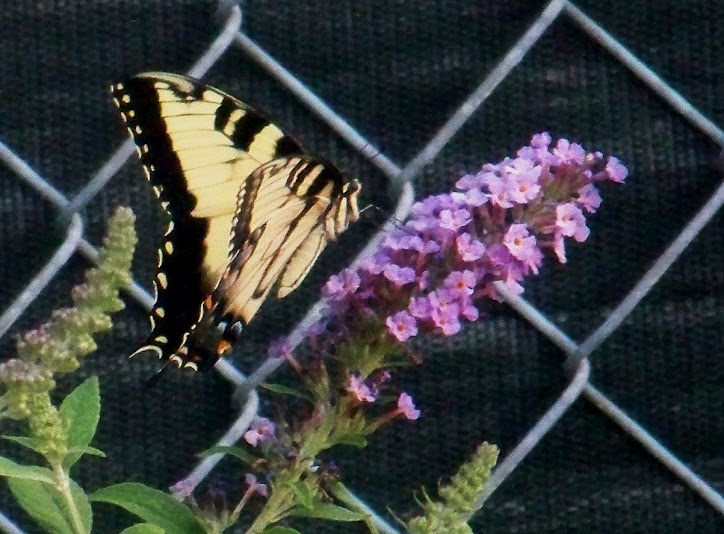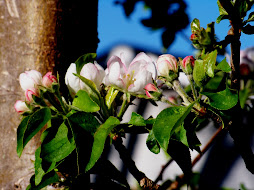If you are a little bit of a risk taker like me, when it comes to putting out plants early; try out this new zone map put out by the Arbor Day Organization. If your more conservative, go to the bottom of the page and click on the old USDA Hardiness Zone Map from 1990. Watch for further articles for how to use these zone charts if you need a "step-through". Be sure to subscribe so you won't miss an article.
Bob
PS: If you have any questions, suggestions, comments; please drop a note in the "Comment" section always located just below the article. Sometimes I will answer you within a few minutes. Most of us Kansas people are pretty laid back and don't really need to feel like big wheels. So ask away. This blog is for You.
Bob
PS: If you have any questions, suggestions, comments; please drop a note in the "Comment" section always located just below the article. Sometimes I will answer you within a few minutes. Most of us Kansas people are pretty laid back and don't really need to feel like big wheels. So ask away. This blog is for You.
http://www.arborday.org/media/zones.cfm
A Note from the Arborday Organization:
New arborday.org Hardiness Zone Map reflects warmer climate
Latest hardiness zones, based on most current temperature data available, suggest up-to-date choices for best trees to plant
Nebraska City, Neb. – Much of the United States has been warmer in recent years, and that affects which trees are right for planting.
Based on the latest comprehensive weather station data, The Arbor Day Foundation has just released a new 2006 arborday.org Hardiness Zone Map which separates the country into ten different temperature zones to help people select the right trees to plant where they live.
The new map reflects that many areas have become warmer since 1990 when the last USDA hardiness zone map was published. Significant portions of many states have shifted at least one full hardiness zone. Much of Illinois, Indiana, and Ohio, for example, have shifted from Zone 5 to a warmer Zone 6. Some areas around the country have even warmed two full zones.
In response to requests for up-to-date information, the Arbor Day Foundation developed the new zones based on the most recent 15 years' data available from the National Oceanic and Atmospheric Administration's 5,000 National Climatic Data Center cooperative stations across the United States. Hardiness zones are based on average annual low temperatures using 10 degree increments. For example, the average low temperature in zone 3 is -40 to -30 degrees Fahrenheit, while the average low temperature in zone 10 is +30 to +40 degrees Fahrenheit.
The new 2006 arborday.org Hardiness Zone Map is consistent with the consensus of climate scientists that global warming is underway. Tree planting is among the positive actions that people can take to reverse the trend. Tree planters across the nation can go to arborday.org, click on the Hardiness Zone link, and enter their zip code to determine their hardiness zone.
"The Arbor Day Foundation supports tree planting throughout America," says Foundation President John Rosenow. "Providing the hardiness zone for individual zip codes at arborday.org is an important part of that goal, by giving tree planters the most up-to-date and useable data available."
"Of course existing trees should continue to be cared for," said Woody Nelson from the Arbor Day Foundation. "Certain species may be more vulnerable to stress with the current warmer climate, but they will continue to provide environmental and economic benefits as they grow. It's just a good idea to consider more tree species diversity for the future."
Planting trees helps counteract global warming.
Trees counteract global warming in multiple ways. Atmospheric carbon dioxide is the leading contributor to global warming, and as trees grow they remove CO2 from the atmosphere, storing the carbon and releasing oxygen. A single tree can remove more than a ton of CO2 over its lifetime. Also, shade provided by trees reduces summer air conditioning needs. According to the USDA, the cooling effect of a healthy tree is equal to 10 room-size air-conditioners operating 20 hours a day. Trees reduce the "heat-island" effect in urban areas, where summer temperatures are generally warmer than the surrounding countryside. According to the U.S. Forest Service, 50 million strategically placed shade trees could eliminate the need for seven 100-megawatt power plants. Additionally, trees around homes and in cities slow cold winter winds, reducing the need for winter heating. This relief on fuel consumption for heating and cooling helps reduce CO2 emissions from burning fossil fuels.
Detailed information about which trees are best for planting throughout the country, the value of trees, and the latest warmer hardiness zones can be found at http://www.arborday.org/
The Arbor Day Foundation is a nonprofit organization of nearly one million members, with a mission to inspire people to plant, nurture, and celebrate trees.
###



No comments:
Post a Comment